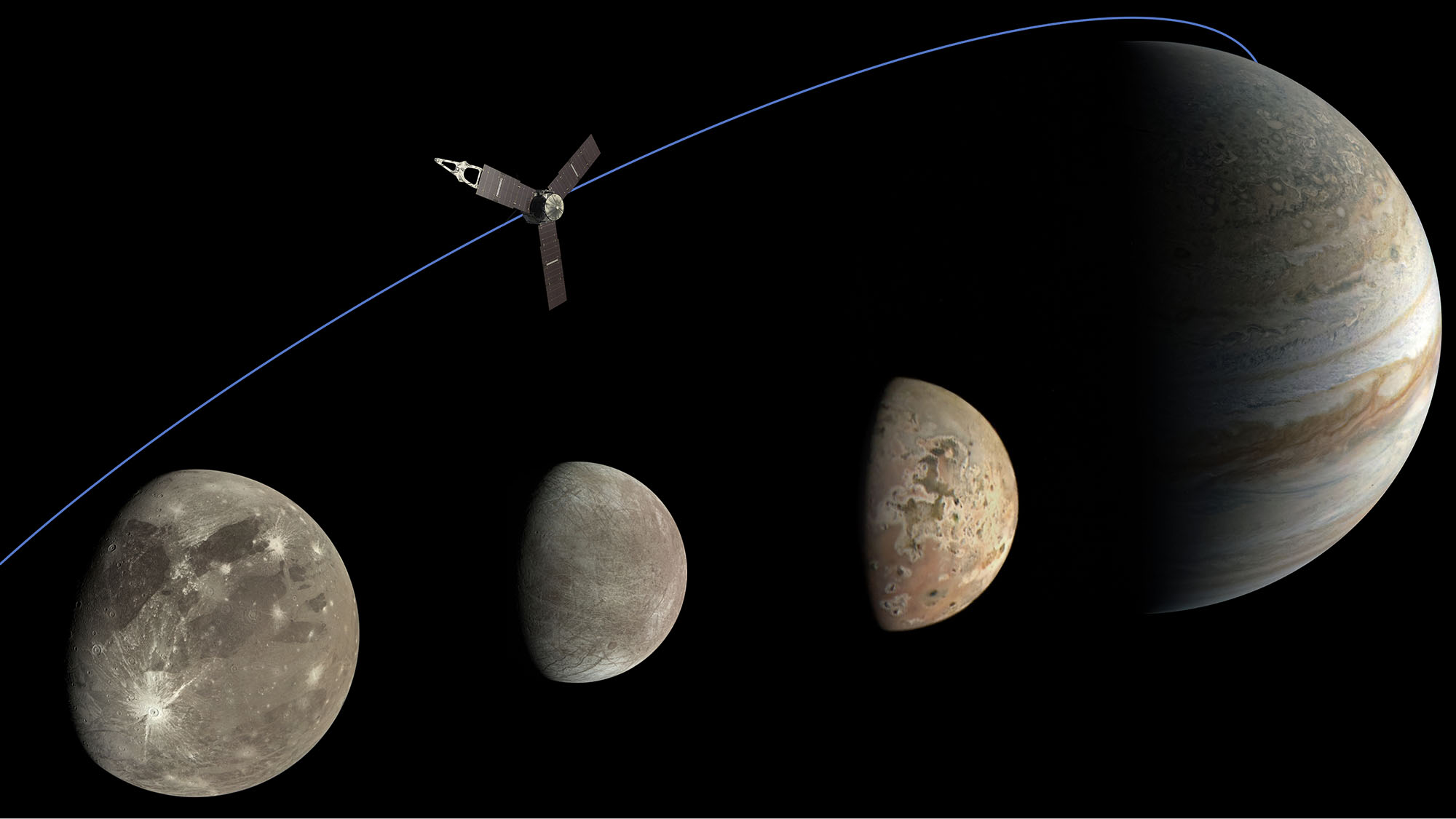The operators of the American probe Juno are currently mainly engaged in preparing their probe for the flyby, which will take place on July 30. That’s when Juno will come within just 22,000 kilometers of the volcanically active moon Io, its closest approach yet. The data collected by the Italian instrument JIRAM (Jovian InfraRed Auroral Mapper) and other scientific instruments should, according to scientists’ expectations, provide a wide range of information about the hundreds of active volcanoes that literally litter the entire surface of Io. These volcanoes pour lava onto the moon’s surface every now and then and release sulfur gases into the atmosphere.
„Although JIRAM was designed to monitor Jupiter’s auroras, its ability to identify heat sources has proven invaluable in our search for active volcanoes on Io,” says Scott Bolton, Juno’s principal scientist at the Southwest Research Institute in San Antonio, adding, “As we get closer with each flyby, JIRAM and other onboard instruments can expand the archive of data about this month. In this way, we can not only better distinguish surface structures, but also understand how they change over time.The Juno probe, equipped with distinctive photovoltaic panels, was launched in 2011 and began studying Jupiter in 2016. On July 31 this year, it will start its third year of superstructure services.
Above and below right, we see JunoCam images of Io taken in May 2023. The images show that the lava flow field surrounding Volund A and B volcanoes has likely grown larger. In the lower left, we see a 1996 Galileo image of the same area, and in the lower center, a 2007 New Horizons image.
Source:
Why are scientists so excited about data about the moon Io? It is because this world, which is only slightly larger than the Earth’s Moon, is under constant intense pressure. Not only is it still being gravitationally pulled by the largest planet in the solar system, but so are the other moons orbiting Jupiter. It is primarily Europa and Ganymede – the largest moon of the entire Solar System. As a result, Io is continuously stretched and then squeezed again. These activities are then directly connected to the generation of heat, which is created by magma. This then flows out in the form of lava from the aforementioned countless volcanoes.
During Juno’s most recent flyby of the moon Io on May 16, the JunoCam onboard camera managed to capture an image from a distance of 35,600 kilometers that shows the smudge in the Volund region near the equator. These streaks are very important evidence for planetologists. “When I compared images of this region in the visible part of the spectrum taken by the Galileo (in 1999) and New Horizons (in 2007) missions, I was excited to see changes in the Volund region, where the lava flow field has expanded towards the west . Another volcano north of the Volund area then spewed out more fresh lava that surrounded it,” describes Jason Perry of the HiRISE Operations Center at the University of Arizona in Tucson, adding: “Io is known for its extreme volcanic activity, but after 16 years it’s nice to see these changes up close again.“
During Juno’s aforementioned flyby of the moon Io on May 16, the JIRAM instrument discovered its own striking evidence. This infrared-sensitive sensor was built by the Italian space agency ASI. During the flyby, it was able to capture the 202 kilometer wide area of Loki Patera, which is the largest volcanic depression on Io. Although JIRAM provides images with a resolution of around 10 km per pixel, its data suggest that an active volcano may be located here. The team therefore believes that they will be able to take another look at this location during the next flyby. “Data suggests that lava could bubble to the surface in the northwest, creating lava lakes in the south and east,” reports Alessandro Mura, a researcher at the National Institute of Astrophysics in Rome, adding: “Any volcanologist will tell you that it is very important to determine if a lava lake has a stable source of material from a subsurface chamber. These data, as well as those we collect on future flybys, will be key to understanding the type of volcanism that occurs on Io.“
Image Sources:
…/1-pia25966_-_jovian_family_portrait_new_version.jpg
sites/default/files/thumbnails/image/pia25964_-_volund_a_b.jpg
Contact the author: report errors, inaccuracies, comments
2023-07-28 22:10:24
#Juno #probe #fly #moon


